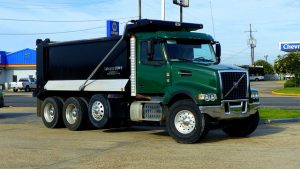🚫 Efficient, Cost-Saving Large Dumpsters Near Me in Chattanooga TN 🚫
Are you in the midst of a construction project in Chattanooga and struggling to manage your waste ef…….
Chattanooga Large Dumpsters: A Comprehensive Guide
Introduction
In the bustling city of Chattanooga, large dumpsters play a critical role in maintaining the cleanliness and efficiency of waste management services. These dumpsters are not just containers for trash; they are integral to the urban infrastructure, environmental sustainability, and economic activity. This article will delve into the various aspects of large dumpsters near Chattanooga, providing readers with a deep understanding of their significance, operations, and future implications.
Understanding Chattanooga Large Dumpsters Near Me
Large dumpsters in Chattanooga are specialized waste collection containers designed to handle bulk waste from residential, commercial, and industrial sources. They vary in size, typically ranging from 2 to 8 cubic yards, accommodating different waste disposal needs. These dumpsters are crucial for the city’s sanitation services, contributing to public health and safety by effectively removing waste from the urban environment.
Historically, waste management has evolved significantly, with large dumpsters representing a pivotal point in this evolution. They have replaced smaller bins and manual collection methods, improving efficiency and capacity while reducing the environmental impact of waste collection.
Global Impact and Trends
The impact of large dumpsters extends beyond Chattanooga, influencing waste management practices globally. The demand for efficient waste disposal systems is a universal challenge, with cities worldwide adopting similar solutions to manage their growing waste streams sustainably.
Trends in waste management include the integration of smart technologies for route optimization, increased recycling rates, and the development of circular economy models. The global shift towards more sustainable practices has led to advancements in dumpster technology, including compaction systems, solar-powered sensors, and GPS tracking for optimized routes and reduced emissions.
Economic Considerations
The economic implications of large dumpsters are multifaceted. They represent a significant investment for municipalities and private waste management companies. The market dynamics for these services include competition among providers, the cost of technology integration, and the labor associated with collection and disposal.
Large dumpsters contribute to the local economy by creating jobs and supporting ancillary industries such as recycling centers and landfills. They also play a role in economic development, as the efficient management of waste can attract businesses and encourage tourism.
Technological Advancements
Technology has revolutionized the waste management industry with innovations that enhance the performance and sustainability of large dumpsters. These advancements include:
Future potential includes autonomous vehicles for collection, AI for sorting waste at facilities, and biodegradable materials for waste bags to further minimize environmental impact.
Policy and Regulation
The governance of large dumpsters is influenced by a variety of policies and regulations that ensure environmental protection, safety standards, and operational efficiency. These include:
These frameworks are critical in guiding the industry towards more sustainable practices while ensuring compliance with environmental and health regulations.
Challenges and Criticisms
Despite their benefits, large dumpsters face challenges such as contamination, misuse, and inefficiencies in collection routes. Critics argue that they can contribute to urban blight if not properly managed. Solutions to these issues include better education on waste segregation, improved dumpster design for security and cleanliness, and the integration of technology for real-time monitoring and route optimization.
Case Studies
Several case studies highlight the successful implementation of large dumpsters in Chattanooga and similar cities worldwide. These examples demonstrate the positive outcomes when best practices are followed, including:
These case studies provide valuable insights into the practical application of large dumpsters and the lessons learned from them.
Future Prospects
The future of large dumpsters in Chattanooga and beyond is promising, with potential for further innovation and integration into smart city initiatives. Emerging trends include the development of biodegradable waste bags, the use of drones for waste collection, and the optimization of waste-to-energy facilities.
Strategic considerations involve addressing the digital divide, ensuring equitable access to advanced waste management technologies, and continuing to adapt to changing waste streams, such as e-waste and single-use plastics.
Conclusion
Large dumpsters near Chattanooga play a vital role in the city’s waste management system, reflecting broader trends in sustainability and innovation. Their impact extends beyond local borders, influencing global practices and contributing to economic growth. As technology evolves and policies adapt, these dumpsters will continue to be a key component in the pursuit of a cleaner, more sustainable urban environment.
FAQs
What size do large dumpsters typically come in?
Large dumpsters for commercial use usually range from 2 to 8 cubic yards. However, they can be larger for industrial applications.
How do smart technologies improve waste collection?
Smart technologies like sensors and GPS tracking optimize routes, reduce fuel consumption, enhance safety, and facilitate better waste management practices.
What are some of the environmental benefits of using large dumpsters?
Large dumpsters can reduce emissions through efficient routing, increase recycling rates, and minimize urban blight by providing secure and clean waste storage options.
How do policies and regulations affect waste management with large dumpsters?
Policies and regulations ensure that the use of large dumpsters aligns with environmental standards, health regulations, and sustainability goals. They guide the industry in adopting best practices and innovations.
What are some of the challenges faced by large dumpsters?
Challenges include waste contamination, misuse, route inefficiencies, and sometimes urban blight. Solutions involve better education, improved design, and technological integration for monitoring and optimization.
By addressing these FAQs, readers can gain a comprehensive understanding of the role of large dumpsters within the context of Chattanooga’s waste management system and their broader implications.

Are you in the midst of a construction project in Chattanooga and struggling to manage your waste ef…….

Are you in the midst of a major cleanout, renovation, or construction project in Chattanooga and str…….

When your project or cleanout in Chattanooga generates more waste than the average bin can handle, t…….